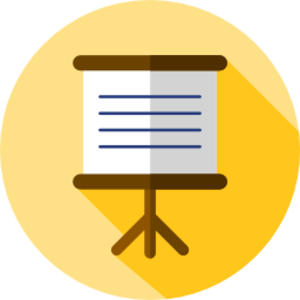Rotating Flip Charts

Any breakout group activity to capture ideas and generate dialogue around them.
Goal
To provide a method for break-out groups to capture their ideas, and then sequentially review each other's ideas and add/build. The output from the session can be further developed afterwards.
Materials
Instructions
Before
Number of participants: 26-50
Time needed: 5 minutes times the number of break out groups+5 to wrap
During
Facilitators often use breakout groups to increase involvement and get more done in a short amount of time. However, following breakout groups, there is typically a report-back process. During the report-back, each team presents its results to the other teams. Yet, one of the challenges with the standard report-back process is that people generally are not as attentive to what other teams are saying: some people may be still preparing their own report-back; while others may feel little obligation to give quality feedback, given the number of other people in the room.
Over the years, I have adopted a different process for report-back that I call rotating review. I believe the process is quite effective for achieving quality feedback on the work of breakout groups.
During a rotating review, each team has three-to-five minutes to review another team's work. Using a colored pen assigned specifically to that reviewing team, the team places a check mark on each item to indicate agreement. They indicate disagreement by placing an "X" and posting a comment on how to improve. After the time limit is reached, teams then rotate to the next chart and perform the same review, while also reviewing the comments of all past reviewers of that chart.
When the teams rotate back to their own flip charts, they will see multiple checkmarks in different colors to indicate those teams that agree with each item in their report. They will also see where disagreement resulted and the number of teams that concurred with that disagreement. The teams now review all the disagreements and indicate whether they agree (YES) or disagree (NO) with the written comment. At this point, all NOs are reviewed by the entire group and final decisions made.
The rotating review process allows each team to receive focused review from each of the other teams. This process also increases the participation and ownership of the entire work by all members. And surprisingly, the rotating review process takes about the same amount of time as the standard report-back process!
Tips to applying this method online
Use shared document(s), such as Google Sheets or a collaboration board in tools like Mural, Miro, Concept Board, JamBoard etc. to capture the work of teams in breakout rooms. For example: in Google Sheets - create a column for each break out group to capture their ideas and a column for other groups to add and comment.
Rule: Only one person per breakout group to be capturing the input on the sheet or board.
Set up the spreadsheet or collaboration board before the session and have the link/s ready to drop in chat for access.
The sheet or board outputs can be downloaded at the end of the session for the group to continue building out.
After
Usual or Expected Outcomes: A deeper understanding of each groups work
Attachments
- flip-chart.png
Background
Source: Michael Wilkinson (adapted from other techniques)